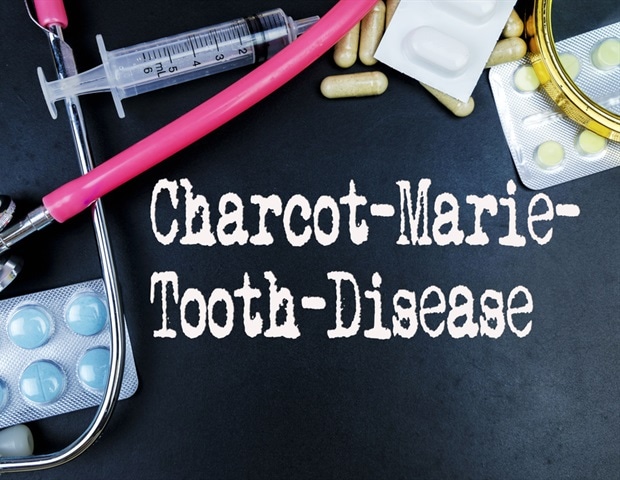Charcot-Marie-Tooth Disease: Understanding a Rare Genetic Disorder and its Dental Manifestations
 |
| Charcot-Marie-Tooth Disease // News Medical |
Exploring the Symptoms, Diagnosis, and Management of CMT1D and Other Subtypes of Charcot-Marie-Tooth Disease
Charcot-Marie-Tooth disease (CMT), also known as hereditary motor and sensory neuropathy, is a genetic disorder that affects the peripheral nervous system. It is named after the three physicians who first described the condition in 1886: Jean-Martin Charcot, Pierre Marie, and Howard Henry Tooth. CMT affects an estimated 1 in 2,500 people worldwide, making it one of the most common inherited neurological disorders.
One of the subtypes of CMT is Charcot-Marie-Tooth disease type 1 (CMT1), which is caused by mutations in genes that encode proteins necessary for the formation and function of myelin, the insulating sheath that surrounds nerve fibers. This damage to myelin disrupts the ability of nerves to transmit signals, leading to muscle weakness and sensory deficits in the limbs, particularly the feet and hands.
Charcot-Marie-Tooth disease type 1 can be further classified into several subtypes, based on the genetic mutations involved. One such subtype is Charcot-Marie-Tooth disease type 1D (CMT1D), which is caused by mutations in the EGR2 gene. CMT1D is also known as Dejerine-Sottas syndrome or hereditary motor and sensory neuropathy type III (HMSN III).
CMT1D is a rare form of Charcot-Marie-Tooth disease, accounting for less than 5% of all CMT cases. It is characterized by severe muscle weakness and atrophy, as well as sensory loss, beginning in early childhood. The condition progresses rapidly, with affected individuals often becoming wheelchair-bound by adolescence.
In addition to the typical features of CMT1, individuals with CMT1D may also have dental abnormalities, such as delayed eruption of permanent teeth, hypodontia (missing teeth), and enamel hypoplasia (defective enamel formation). These dental abnormalities are thought to be a result of the same genetic mutation that causes CMT1D, which affects the development of teeth as well as nerves.
R E A D : Rising STD Rates: A Call to Action for Prevention, Education, and Access to Care
There is currently no cure for CMT1D, and treatment is supportive, aimed at improving quality of life and managing symptoms. Physical therapy and assistive devices such as braces and orthotics can help to improve mobility and reduce the risk of falls. Pain medication may be necessary to manage neuropathic pain, and surgery may be required to correct severe deformities.
 |
| Charcot-Marie-Tooth Disease // Adobe Stock |
Genetic counseling is also an important aspect of the management of CMT1D, as the condition is inherited in an autosomal dominant pattern, meaning that each child of an affected individual has a 50% chance of inheriting the mutation and developing the condition. Genetic testing can help to identify carriers of the mutation and inform family planning decisions.
While dental abnormalities are not commonly associated with Charcot-Marie-Tooth disease, they have been reported in several other subtypes of the condition. For example, individuals with Charcot-Marie-Tooth disease type 4C (CMT4C) may have enamel defects, while those with Charcot-Marie-Tooth disease type 2B (CMT2B) may have dental anomalies such as delayed eruption of teeth and enamel hypoplasia.
Moreover, some individuals with Charcot-Marie-Tooth disease may also have other non-neurological symptoms, such as scoliosis (curvature of the spine), pes cavus (high-arched feet), or pes planus (flat feet). These symptoms may vary depending on the subtype of CMT and the severity of the condition.
The diagnosis of Charcot-Marie-Tooth disease usually involves a combination of clinical examination, family history, and genetic testing. In some cases, nerve conduction studies or electromyography (EMG) may also be performed to assess nerve function and detect muscle abnormalities.
While there is currently no cure for Charcot-Marie-Tooth disease, ongoing research is focused on understanding the underlying mechanisms of the condition and developing new therapies to improve outcomes. For example, gene therapy and pharmacological interventions that target specific cellular pathways involved in nerve function and myelin formation are currently being investigated as potential treatments for CMT.
In summary, Charcot-Marie-Tooth disease is a complex genetic disorder that affects the peripheral nerves and can cause a range of symptoms, including muscle weakness, sensory loss, and dental abnormalities. Although there is no cure for CMT, early diagnosis and management can help to improve quality of life and reduce the risk of complications. Ongoing research is also exploring new treatment options for this challenging condition.
Charcot-Marie-Tooth disease type 1D, also known as Dejerine-Sottas syndrome, is a rare form of CMT that is characterized by severe muscle weakness and atrophy, as well as dental abnormalities. Although there is currently no cure for CMT1D, early diagnosis and management can help to improve quality of life and reduce the risk of complications. Genetic counseling is also an important aspect of the management of CMT1D, as it can help to inform family planning decisions and improve the chances of early diagnosis and intervention in future generations.
R E A D : Eating Habits to Avoid: Top Culprits of High Cholesterol

No comments:
Post a Comment